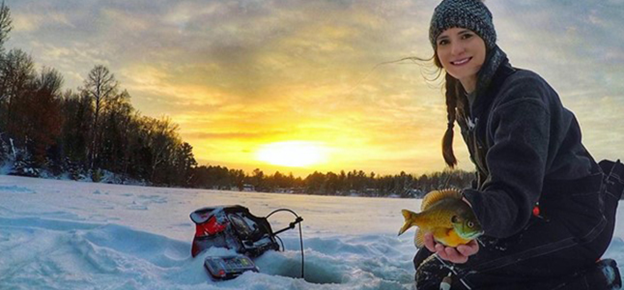WISCONSIN URGES ICE ANGLERS TO PROTECT WATERWAYS FROM AQUATIC INVASIVES

MADISON, Wis. – The Wisconsin Department of Natural Resources (DNR) and UW-Extension are asking anglers to help prevent the spread of aquatic invasive species when ice fishing this winter.
While aquatic invasive species have made their way into Wisconsin’s waterways, anglers can reduce transmission by checking for and removing any mud or plant material clinging to their gear, including sleds used to haul supplies, before leaving fishing spots.
Invasive species are non-native plants, animals and diseases that cause great ecological, environmental or economic harm. Aquatic invasive species can crowd out native plants and animals and threaten the quality of boating and fishing in Wisconsin waters.
Two common non-native aquatic plants in Wisconsin include the curly-leaf pondweed and Eurasian watermilfoil which remain hardy in winter giving them an advantage over native aquatic plants. Although the plant-like algae starry stonewort, a relative newcomer aquatic invasive species in Wisconsin, dies back for winter, its tiny, star-shaped bulbils may be present in the mud drawn up from augers. The larvae of invasive snails and mussels can also be found in the water and mud during winter.
A few minutes of preventative action can help preserve and protect waterways for generations to come. Before stepping onto the ice to fish and when leaving, ice anglers should:
- Inspect boats, trailers and equipment for attached aquatic plant, animals or mud
- Remove all attached plants or animals
- Drain all water from boats, motors, livewells, buckets and other equipment
- Never move live fish away from a waterbody
- Dispose of unwanted bait in the trash
To view all current fishing regulations, click here.
The DNR would like to thank every angler for following the recommended prevention steps. These actions are vital to keeping your favorite fishing spot safe and accessible for years to come.
You may also like
-
Attending Customer Appreciation Day in Person?
-
Whitewater Fishing pro, Jay Przekurat, eyeing vaunted Angler of the Year title
-
Free Fishing Weekend in Wisconsin June 7-8
-
The Finest Four Weeks From now through early June is arguably the best stretch to score walleyes on northern natural lakes
-
Fishing’s Greatest Auction is Back!
